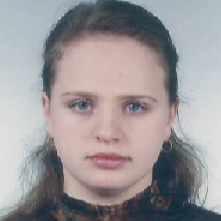International Journal of Intelligent Systems and Applications (IJISA)
IJISA Vol. 8, No. 12, 8 Dec. 2016
Cover page and Table of Contents: PDF (size: 347KB)
Analytical Assessment of Security Level of Distributed and Scalable Computer Systems
Full Text (PDF, 347KB), PP.57-64
Views: 0 Downloads: 0
Author(s)
Index Terms
Distributed computer systems, Security analysis, Risk-based approach
Abstract
The article deals with the issues of the security of distributed and scalable computer systems based on the risk-based approach. The main existing methods for predicting the consequences of the dangerous actions of the intrusion agents are described. There is shown a generalized structural scheme of job manager in the context of a risk-based approach. Suggested analytical assessments for the security risk level in the distributed computer systems allow performing the critical time values forecast for the situation analysis and decision-making for the current configuration of a distributed computer system. These assessments are based on the number of used nodes and data links channels, the number of active security and monitoring mechanisms at the current period, as well as on the intensity of the security threats realization and on the activation intensity of the intrusion prevention mechanisms. The proposed comprehensive analytical risks assessments allow analyzing the dynamics of intrusions processes, the dynamics of the security level recovery and the corresponding dynamics of the risks level in the distributed computer system.
Cite This Paper
Zhengbing Hu, Vadym Mukhin, Yaroslav Kornaga, Yaroslav Lavrenko, Oleg Barabash, Oksana Herasymenko, "Analytical Assessment of Security Level of Distributed and Scalable Computer Systems", International Journal of Intelligent Systems and Applications (IJISA), Vol.8, No.12, pp.57-64, 2016. DOI:10.5815/ijisa.2016.12.07
Reference
[1]E. Maiwald, “Fundamentals of network security,” Technology Education, 2004.
[2]ISO / IEC 15408-1-2002 Information technology. Methods and security features. Criteria for Information Technology Security Evaluation.
[3]ISO / IEC 15408-2009 Information technology - Security techniques - Evaluation criteria for IT security. http://ebookbrowse.com/i/iso-15408-1-pdf
[4]Risk Management Guide for Information Technology Systems: SP 800-30. – Recommendations of the National Institute of Standards and Technology, 2002.
[5]ISO/IEC 27001:2005 Information technology - Security techniques - Information security management systems – Requirements, 2005.
[6]E. Alsous, A. Alsous, and A Botnet, “Detection System Using Multiple Classifiers Strategy,” International Review on Computers and Software, Vol. 7. n. 5, 2012, pp. 2022-2028.
[7]K. Suresh Kumar, and T. Sasikala, “A Technique for Web Security Using Mutual Authentication and Clicking-Cropping Based Image Captcha Technology,” International Review on Computers and Software, Vol. 9, n. 1, 2014, pp. 110-118.
[8]R. Pal, and P. Hui, “Cyber-insurance for cyber-security: A topological take on modulating insurance premiums. Performance Evaluation Review,” 2012.
[9]K. Rama Abirami, M. G. Sumithra, and J. Rajasekaran, “An Efficient Secure Enhanced Routing Protocol for DDoS Attacks in MANET,” International Review on Computers and Software, Vol. 9, n. 1, 2014, pp. 119 – 127.
[10]S. I. Sabasti Prabu, and V. J. Senthil Kumar, “Entropy Based Approach to Prevent the DDoS Attacks for Secured Web Services,” International Review on Computers and Software, Vol. 8. n. 4, 2013, pp. 888-891.
[11]“Practical Threat Analysis for Information Security Experts,” TA Technologies, 2010. http://www.ptatechnologies.com/default.htm
[12]Y. Senhaji, H. Medromi, and S. Tallal, “Network Security: Android Intrusion Attack on an Arduino Network IDS,” International Review on Computers and Software, Vol 10, n. 9, 2015, pp. 950-958.
[13]V.Mukhin. Adaptive Approach to Safety Control and Security System Modification in Computer Systems and Networks, Proceedings of the 5-th IEEE Workshop on Intelligent Data Acquisition and Advanced Computing Systems: Technology and Applications (IDAACS’2009), Rende (Cosenza), Italy, 21 - 23 September 2009. – pp. 212 - 217.
[14]V. Mukhin, A Bidkov, Vu Duc Thinh. The Forming of Trust Level to the Nodes in the Distributed Computer Systems, Proc. of XIth International Conference “Modern Problems of Radio Engineering, Telecommunications and Computer Science TCSET’2012”, Lvov – Slavsko, 21 - 24 February 2012. – p. 362.
[15]IEC/ISO 31010 Risk management – Risk assessment techniques, 2009.
[16]ISO 31000:2009 Risk management - Principles and guidelines, 2009.
[17]P. Hopkin, “Fundamentals of Risk Management: Understanding, Evaluating and Implementing – The Institute of Risk Management,” 2010.
[18]R. Sohizadeh, M. Hassanzadeh, H. Raddum, and K. Hole, “Quantitative risk assessment,” 2011.
[19]“Risk Management Fundamentals Homeland Security Risk Management Doctrine,” 2011. https://www.dhs.gov/xlibrary/assets/rma-risk-management-fundamentals.pdf
[20]“Security risk analysis and management”. https://www.nr.no/~abie/RA_by_Jenkins.pdf
[21]“Risk management, concept and methods,” CLUSIF, White paper. https://www.clusif.asso.fr/fr/production/ouvrages/pdf/CLUSIF-risk-management.pdf
[22]“Managing Information Security Risk Organization, Mission, and Information System View,” NIST Special Publication 800-39, March 2011. http://csrc.nist.gov/publications/nistpubs/800-39/SP800-39-final.pdf
[23]“Basics of Risk Analysis and Risk Management”. http://www.hhs.gov/sites/default/files/ocr/privacy/hipaa/administrative/securityrule/riskassessment.pdf
[24]“NHS Information Risk Management Digital Information Policy NHS Connecting for Health,” 2009. http://systems.hscic.gov.uk/infogov/security/risk/inforiskmgtgpg.pdf
[25]M. Ketel, “It security risk management,” Proceedings of the 4 6th Annual Southeast Regional Conference, 2008.
[26]L. P. Rees, J. K. Deane, T. R. Rakes, and W. H. Baker, “Decision support for cybersecurity risk planning,’ Decision Support Systems, vol. 51. no. 3. 2011, pp. 493-505.
[27]P. Saripalh, and B. Walters, “Quire: A quantitative impact and risk assessment framework for cloud security,” IEEE 3rd International Conference on Cloud Computing, 2010.
[28]Mohamed Hamdi, and Noureddine Boudriga, “Computer and network security risk management: theory, challenges, and countermeasures,” International Journal of Communication Systems, Volume 18, Issue 8, 2005, pp. 763–793. DOI: 10.1002/dac.729
[29]Yang Liu, Zhikui Chen, and Xiaoning Lv, “Risk computing based on capacity of risk-absorbing in virtual community environment,” International Journal of Communication Systems, 2014.
[30]Shi, C. Beard, and K. Mitchell, “Analytical Models for Understanding Misbehavior and MAC Friendliness in CSMA Networks,” Performance Evaluation, Vol. 66 (9–10), 2009, pp. 469. DOI:10.1016/j.peva.2009.02.002.
[31]N. Mohammadi, and M. Zangeneh, “Customer Credit Risk Assessment using Artificial Neural Networks,” I.J. Information Technology and Computer Science, Vol.8, N3, 2016, pp. 58-66. DOI: 10.5815/ijitcs.2016.03.07
[32]P. R. Vamsi, and K. Kan, “Self Adaptive Trust Model for Secure Geographic Routing in Wireless Sensor Networks,” International Journal of Intelligent Systems and Applications, Vol. 7, N3, 2015, pp. 21-28. DOI: 10.5815/ijisa.2015.03.03
[33]A. Koul, and M. Sharma, “Cumulative Techniques for Overcoming Security Threats in Manets,” International Journal of Computer Network and Information Security, Vol. 7, N. 5, 2015, pp.61-73. DOI: 10.5815/ijcnis.2015.05.08
[34]S. G. Ponnambalam, P. Aravindan, and P Sreenivasa Rao, “Comparative equation of genet IC algorithms for job-shop scheduling,” Production Planning Control, vol. 12, 2001, pp. 560-574.
[35]S. Dimassi, A. B. Abdelali, A. Mrabet, M. N. Krifa, and A. Mtibaa, “A Modeling Tool for Dynamically Reconfigurable Systems,” International Review on Computers and Software, Vol. 9, n. 4, 2014, pp. 600-608.
[36]H. Shan, W. Smith, L. Oliker, and R. Biswas, “Job scheduling in a heterogeneous GRID environment”. http://www.osti.gov/bridge/servlets/purl/860301-UfJBKm/860301.pdf
[37]I. Bowman, “Conceptual Architecture of the Linux Kernel”. www.grad.math.uwaterloo.ca/~itbowman/CS746G/a1/





